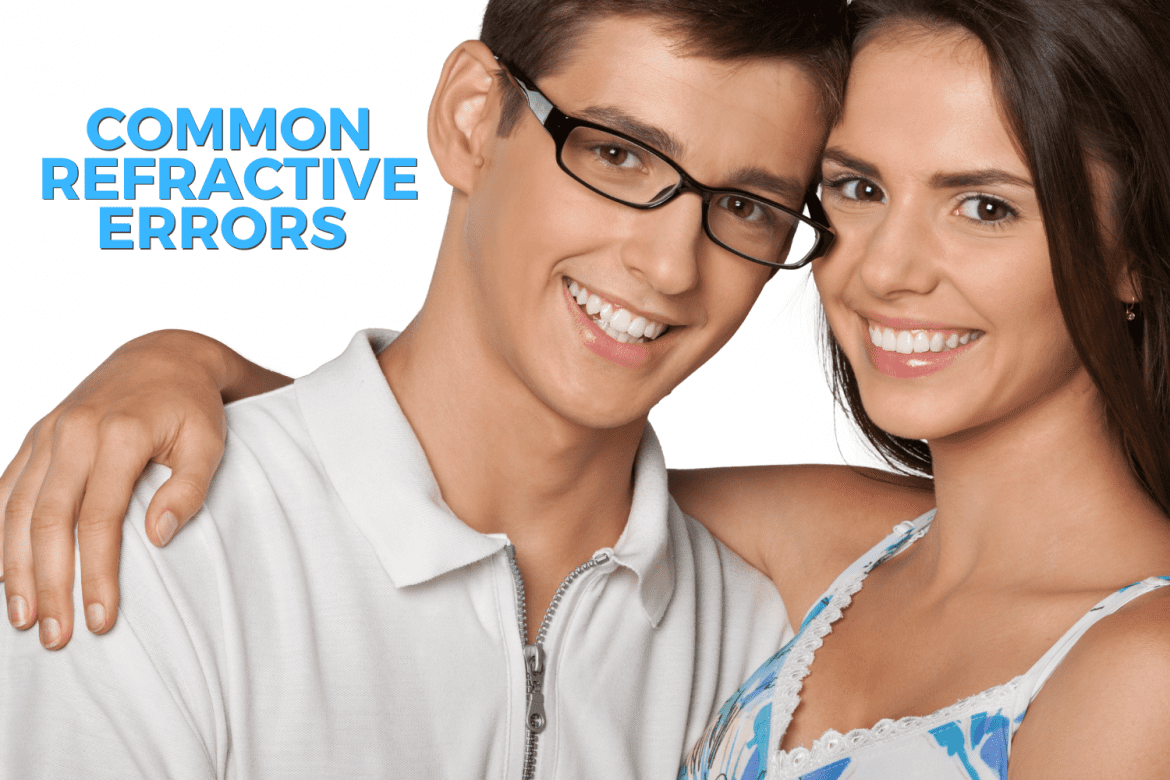1331 total views , 7 views today
Roughly 194 million Americans and over 1.4 billion people worldwide wear glasses or contact lenses, according to The Vision Council. It’s estimated 75% of adults currently require, or will require, vision correction at some point in their lives.
While there are a number of reasons people wear glasses, most often it is to correct what is known as a refractive error. The National Eye Institute defines a refractive error as a vision issue that occurs as a result of changes in the shape of your eye that prevents light from correctly focusing on the retina. As a result, images often become blurred, distorted, and out of focus while also contributing to physical discomforts including headaches, double vision, and eye strain.
Common types of refractive errors
There are four major types of refractive errors: nearsightedness, farsightedness, presbyopia, and astigmatism.
- Nearsightedness, or myopia, is an elongation of the eyeball that results in difficulty clearly seeing objects from a distance.
- Farsightedness, or hyperopia, is the opposite of myopia and causes issues when focusing on objects up close.
- Presbyopia is a progressive age-related form of farsightedness that starts to become noticeable in your mid 40’s and causes issues focusing on nearby objects.
- Astigmatism can cause issues focusing on objects both up close and from afar.
Nearsighted vs. farsighted: which is more common?
When we talk about refractive errors and vision, we typically focus on the two major types of refractive errors, nearsighted and farsighted. While both cause significant vision issues, myopia, or nearsightedness, is much more common than farsightedness.
In fact, while the National Eye Institute estimates that farsightedness affects 5 to 10% of the population, nearsightedness occurs in roughly 40% of the population. To make matters more concerning, recent studies have shown a rapid increase in the prevalence of myopia, a trend that will likely result in over 5 billion people, or half the world’s population, being nearsighted, or myopic, by 2050.
How to know if you’re nearsighted or farsighted
Being nearsighted or farsighted has a profound effect on how clearly you can see objects and while each condition requires diagnosis by a medical professional, they are characterized by a wide range of different symptoms and characteristics.
Being farsighted is characterized by the inability to clearly see nearby objects and often results in eyestrain and headaches while reading, working on the computer, or writing. The most common indication of farsightedness is having to squint in order to focus, or even see, nearby objects.
Nearsightedness, on the other hand, is the opposite: the inability to see objects clearly from a distance. Being nearsighted often causes significant eyestrain and headaches and is characterized by objects being blurry or distorted, experiencing double vision, and seeing halos around bright objects. For many, nearsightedness becomes a serious problem when driving, especially at night (a condition known as night myopia).
Is it better to be nearsighted or farsighted?
While it’s common to wonder if it’s better to be nearsighted vs. farsighted, it’s important to realize that both are medical conditions and one isn’t necessarily better or worse than the other.
The good news is that both nearsightedness and farsightedness are treatable with a wide variety of effective vision correction options.
Nearsighted and farsighted treatment options
With any vision issue, proper treatment begins with having your eyes examined by your eye doctor; specifically, a thorough refraction assessment will determine your diagnosis. Once a refractive error has been determined, your doctor will share with you a range of potential treatment options.
Treatment options for farsightedness
Fortunately, for some, mild cases of farsightedness have been shown to correct themselves without prescription glasses, contact lenses, or corrective surgery. For this reason, optometrists may often recommend increased periods of eye rest as a way to initially address mild farsightedness.
For others, especially those between the ages of 45-65, experiencing presbyopia, or age-induced farsightedness, it’s common to turn to non-prescription “readers” (reading glasses). While these temporarily improve vision, farsightedness will continue to get worse, eventually requiring proper prescription lenses or contacts to address the issue.
For the rest of the population who deal with farsightedness, treatment often involves prescription eyeglasses, contact lenses, or refractive surgery such as LASIK to counteract the curvature of the cornea. The strength of the prescription will depend on the severity of your farsightedness.
Treatment options for nearsightedness
Like treatment options designed for farsightedness, treatments for nearsightedness are designed with the goal of improving vision by refocusing light on the retina with either corrective prescription lenses or refractive surgery.
Most people diagnosed as myopic require corrective prescription lenses in the form of glasses or contact lenses or surgery, like LASIK, to address the condition.
Interestingly, one of the latest developments in slowing the progression of nearsightedness is the use of dual-focus contact lenses. Specifically, wearing dual-focus contact lenses was found significantly effective in reducing the progression of nearsightedness.
It’s also important to point out that being nearsighted, or myopic, requires continued monitoring and consultation with your eye doctor to ensure your eyes are free from signs of glaucoma, cataracts, and other issues associated with the retina.
Orthokeratology for treating nearsightedness and farsightedness
Another treatment option for refractive errors is a procedure known as orthokeratology. Orthokeratology, or Ortho-k, involves wearing rigid-gas permeable contact lenses that have been specially designed to reshape the cornea. Promoted as “orthodontics (dental braces) for your eyes,” these specialized contact lenses are worn for several hours a day (most often while sleeping) for a period of two weeks and have been shown to flatten the center of the cornea, changing how light is bent as it enters the eye.



